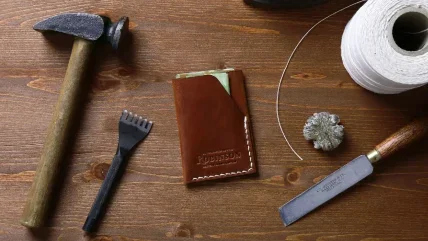
The tanning and leather industry is no stranger to the sustainable mindset. As Cotance has discussed before, the entire concept of making leather goods is based on recycling industrial waste from the food sector. The hides and skins of slaughtered animals are residues of meat production. We don’t waste resources. In fact, tanning is probably the world’s most efficient recycling industry, as virtually all hides and skins generated at the global level are recovered and recycled. Tanners cooperate with stylists and designers as well as other industries to make the most out of our raw materials.
According to the UN Food & Agriculture Organisation, 7.2 million tonnes of skins and hides are generated every year. Without the tanning and leather industry, they would have to go to landfill or incineration, which would poison the land and produce greenhouse gases. Some say that livestock production also contributes to emissions. Indeed this is true to an extent, but by substituting the need for synthetic textiles or plastic, made with unsustainable petrochemicals, tanning precludes that impact and generates more added value, all from renewable resources.
A lasting impression
Leather is not fast fashion. It is durable and repairable, and becomes even more beautiful as it ages. You can enjoy a leather product all your life and even pass it on to the next generation.
Look at substitutes for leather. They are often made of polymers, like polyurethane or PVC, and often carry a heavy petroleum-based coating, contributing heavily to microplastic pollution. Plastics are being found everywhere, from mountaintops to the deepest depths of the ocean. They also take significantly longer to biodegrade after disposal – a few hundred years, in many cases.
Tanners in Europe have made a big step towards sustainability. They are not yet there with zero pollution, but that is the ambition. This is why, after a successful first edition in 2012, European tanners will produce a new ‘European Social and Environmental Report’. Data on the social accountability and environmental performance of tanneries is currently being collected from all over Europe. We want to see how far we have progressed towards our goal.
European tanners are continuously improving their manufacturing processes with state-of-the-art technologies to make their leather products more sustainable – because with sustainability comes more efficiency, durability, and high-quality processes and products.
You can wear and use leather products with a clear conscience: through recycling and sustainable development of manufacturing, European tanners contribute to a cleaner and greener environment.
France’s four-year plan
French Prime Minister Édouard Philippe has put forward legislation to ban destroying unsold or returned consumer products in order to incentivise brands to donate or recycle more. Philippe said that a ban on destroying non-food goods, including leather, would come into effect within the next four years.
According to the prime minister’s office, more than €650 million worth of new consumer products are thrown away or destroyed every year in France. “[This is] a waste that shocks, that is shocking to common sense. It is a scandal,” Philippe said.
The new measures, projected to come into law sometime between 2021 and 2023, would make it compulsory to have products reused or recycled, and are part of a draft bill on the economy that is due to be discussed by the cabinet in July.
The practice of destroying unsold products is widespread among large retailers and luxury brands in order to protect intellectual property and prevent counterfeiting.
The announcement comes after the successes of green parties in recent European parliamentary elections, and is in line with demands for more measures towards sustainability.
Source: French Government






